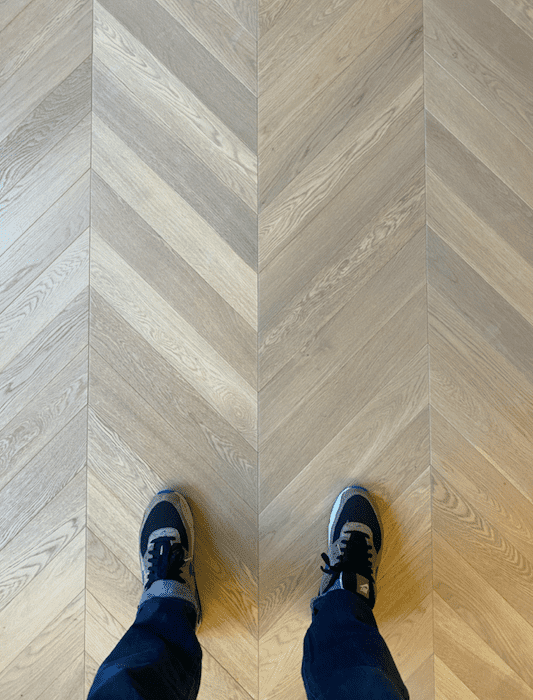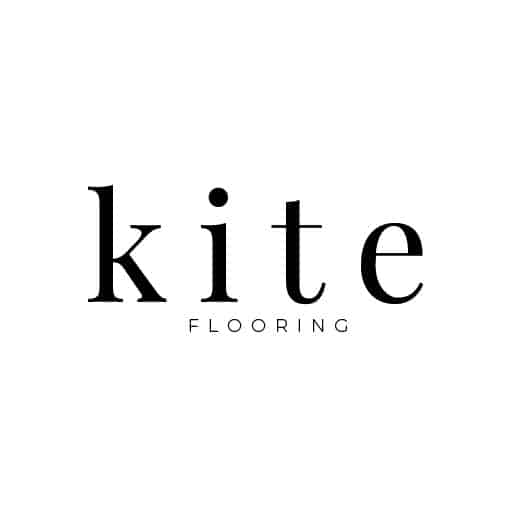There are almost limitless options with wood flooring, but as we generally don’t buy flooring every day, it can be confusing. Our advice is to think along two lines; Design and Quality.
Design
Broadly, there are three design aspects to your wood floor; Shape, Colour and Texture.
Firstly shape, parking the more niche options, wood flooring generally comes in a Plank, Herringbone, or Chevron. Planks come in almost any width, from 90mm up to 300mm, Chevron and Herringbone in small, medium or large sizes. Normally, customers start by looking to social media, magazines or Pinterest for inspiration. If you’re not sure about which shape to go for, we can almost guarantee you will end up with a straight plank floor. Patterned floors are c70% more expensive, from a subfloor, supply and fit perspective, so you have to really want one!



In terms of colour, dark floors make a space feel cosier, and light floors more spacious and airy. Mid-tone floors, such as yellows or raw colours, are more versatile and work in any space. These floors tend to work best if you don’t have a specific design style in mind. Our top tip is to always look for a general colour, not a specific one; wood flooring is a natural product so you get colour variations across the planks. Also think about the “grade” of wood; with knots, with no knots, or something in the middle. Cleaner grades look more modern, character grades more rustic.
Finally, think about texture. Floors can be heavily brushed or distressed to give them a reclaimed feel. They can also be light brushed or smooth. Like the shape, this comes down to design style. Good quality distressed floors will transform a room, but because there are more treatments on the wood, they will always be more expensive. Pay particular attention to how the knots have been filled. We regularly come across clients who have bought a rustic floor online, only to discover the knots have been poorly filled.




Thickness is something that people often ask about as people often ascribe more value to thicker floors. Remember, the majority of wood floors are cosmetic floors (..they sit on top of a subfloor). Thickness, therefore, doesn’t matter, provided you have a sufficient oak top layer to sand the floor (say 2/3mm plus..). (NB – We do think about thickness where people want flush transitions, from wood into tile, and the thickness of the floor has to be adjusted accordingly).
Quality
When we first started our journey, we assumed all oiled floors were the same, but this couldn’t be further from the truth. A well-made wood floor, with high-quality oils, will last generations and perform well in a busy family environment. A poorly made floor won’t.
Our advice is always to check which oils have been used on the floor. If the manufacturer doesn’t know, they’re probably using cheap oils. Also, check how the oils are applied; the floors must be roughed up between coats, to ensure the oils sit deep within the wood structure. At Kite, we use oils from a manufacturer called Ciranova (basically, the BMW of wood oils..).
The quality of milling is also important. Good quality floors will slot together well, with no gaps. This is especially relevant with patterned floors (we would advise against buying a patterned floor, like Chevron online).
To make an accurately milled floor, you need well-maintained machinery that is serviced regularly. In the quest for ever-cheaper pricing, this maintenance is something that is often overlooked, leading to problems with flooring onsite. It’s also possible to cut corners in other aspects of floor production, such as the glues that hold the oak top layers down, and not controlling the atmospheric conditions in the factory – (if moisture gets into the oak top layers during production, you can often have problems with the floor).
At the beginning of Kite, we worked with cheaper floors that are typically sold online, and had problems, especially with oil quality, delamination (when the oak top layers came away from the ply core), split grains and also lippage (when there were noticeable differences in heights between the planks). Our top tip would be to look for brands that professional floor fitters work with; fitters fit up to 60 floors per year, so they know what works best (contractors only 3 or 4…). Wood floors are not for everyone, especially those on a budget. If you’re struggling to make the numbers work, opt for a laminate rather than a cheap wood floor. There are some great, matt finished laminates on the market, which whilst they don’t have the depth or texture of a wood floor, they’re significantly cheaper, and very hard wearing.



Finally on cost, which is always the elephant in the room. Of course, wood flooring can be expensive. When you factor in accurate milling (so how the boards are cut), good quality timber (so the boards aren’t ugly..) and multiple coats of high quality oils, a good quality wood floor will never be cheap. If your project cannot afford a good quality wood floor, our advice is, never buy a cheap wood floor. That’s when we see the most problems (and is when we’re often contacted by customers who need help). Our advice is go with a Premium Laminate over a cheap wood floor; you get a lot more floor for your money.
Hope this helps. Remember, product is just one part of your flooring journey. It also needs to be fitted.
Here are two more helpful blogs for the fitting side –
There’s more than one way to fit a floor – Here’s why it matters
And Do you need a professional floor fitter?
Happy Sampling!















